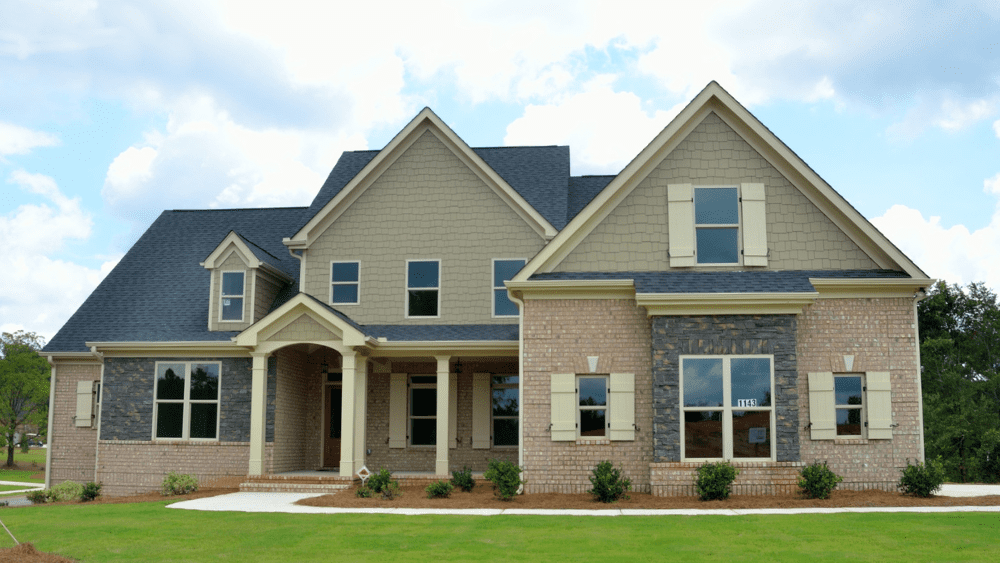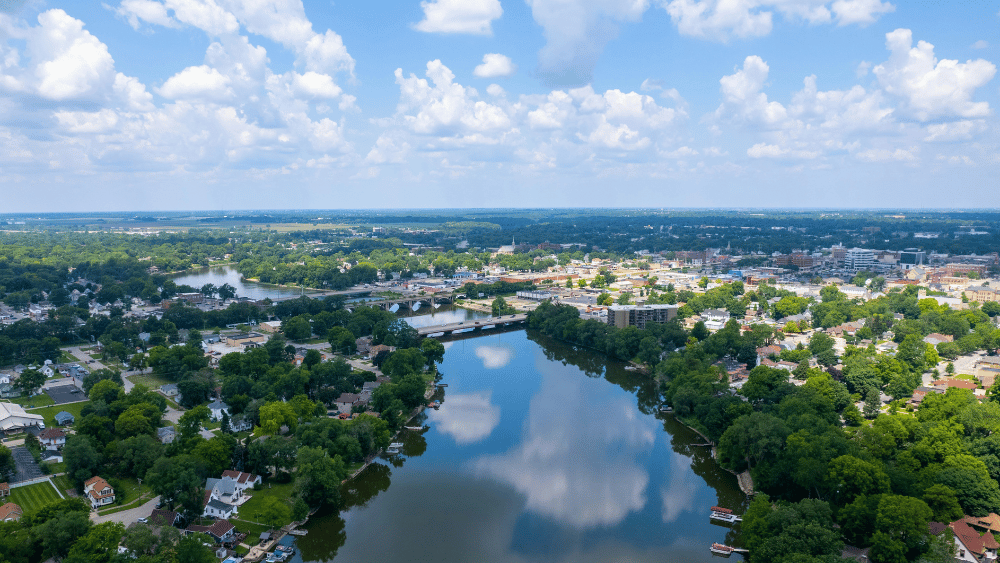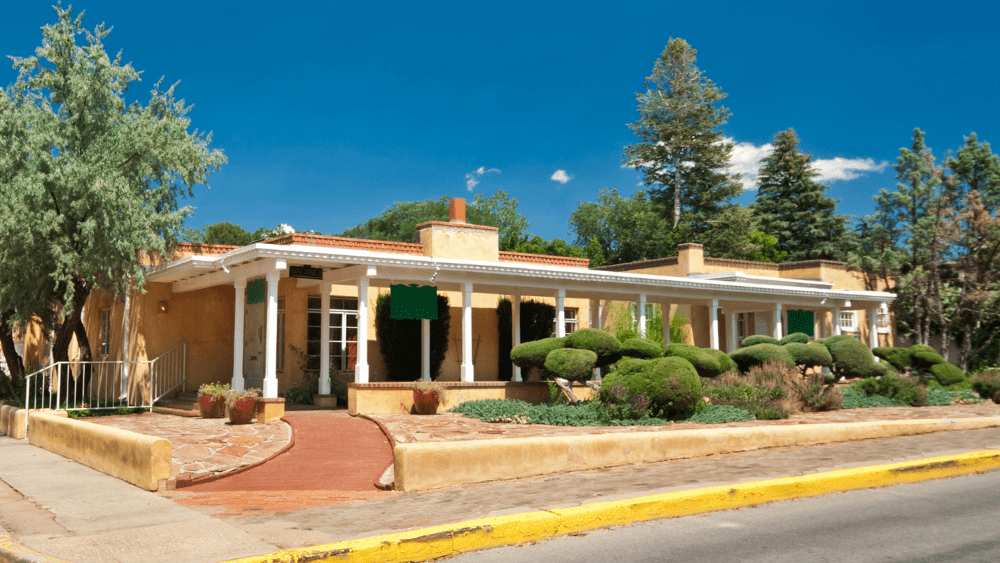
Diane Dawson, a top real estate agent in Champaign, Illinois, jokes that owning a brick house is like having a bunch of $100 bills plastered to your exterior. Brick is in demand and sells well. In fact, 34% of buyers said brick is their preferred choice for a home exterior. It’s low maintenance, weather-resistant, and environmentally friendly. Even so, boosting your brick home’s curb appeal can take your home’s appearance from the street to the next level and add to your bottom line at resale. HomeLight’s research shows 76% of agents believe improving curb appeal is the best thing you can do to make your home more appealing. To help you get there, we’ve compiled 8 curb appeal ideas that will give your brick house some extra oomph. Dawson stresses the importance of getting your brick in great shape before you focus on any other curb features. If you don’t start from a strong baseline, any extra efforts will fall flat. Here are some ideas to give your worn-down brick a makeover. Remove and replace (or repair) all damaged bricks with the help of a masonry specialist. If any of the base bricks are cracked, there could be a variety of issues: moisture is a usual culprit and could be caused by a frequently watered lawn or a leaky roof — like a sponge, brick expands as it absorbs water, and over time, as one wall expands, the others will crack from the pressure. There might also be a foundation issue. If concrete was used for the foundation, it could lead to cracking, as concrete is extremely porous. To determine the issue, it’s best to call in a structural engineer or repair mason to check it out. It sounds like a straightforward thing to do, but many owners forget to simply clean up their brick, thinking they need to spend all their time on staging or landscaping. Keep in mind, though, not all bricks are made from the same materials. While burnt clay is the most common, concrete is becoming increasingly popular. So make sure you talk to a professional and select the right cleaning solution if you’re opting to use chemicals. If you want a quick clean that is safe for all types of brick, a water-based power-washing with a pressure washer is a smart option; just make sure to select one with pressure less than 3,000 pounds per inch or you might damage the brick. Be sure to cover all light fixtures and electrical outlets, place a tarp over any adjacent flowers and shrubs, and protect the trim around your windows and doors with some painter’s tape. Close and lock all windows, then power-wash away! (Note that a pressure washer is strong enough to remove some paint, so if your brick is painted, you might want to clean manually or hire professionals to do the work). After you’ve used the pressure washer, you can take a small brush to spot clean any noticeable bits of grime that remain. According to Dawson, there are three main ways to change the look of your existing brick: Painting your brick will give it a solid, opaque color of choice. You will, however, have to repaint it every 3-5 years to maintain the color. In addition, it’s an irreversible process: you can paint it again if you wish to change the color, but you can’t get it back to the original brick. To paint your brick house, you’ll need to: Materials needed: a pressure washer, a cleaning solution specific to your brick, latex primer, elastodynamic paint, painter’s tape, and tarp to cover any areas you don’t wish to paint. If a painted brick house is yelling with color, whitewashing is more like a whisper — it will tone down the brick’s color and add a translucent layer of color on top. To whitewash your home, you’ll need to: Something to remember: brick is very porous! Even if the whitewash looks dark after application, after the walls have time to dry, it will lighten up. Materials needed: a cleaning solution specific to your brick, a mask, goggles, putty knife, wire brush, paint scraper, drop cloth, painter’s tape, water, latex paint, a bucket, a brush or a spray bottle, and a cotton cloth or paper towels Staining it is more permanent than painting, as it acts like a dye. When you paint your brick, you’re layering color on top of it, but with staining, you’re letting the color bond with the brick, allowing the brick to breathe while creating a new color. To stain your home, you’ll need to: Materials needed: Water, goggles, gloves, a mild detergent, a pressure washer, a bucket, a paintbrush, brick stain, a rag, painter’s tape, and tarp. You might also need a lacquer thinner if you’re interested to remove sealant from your brick. We’ve already mentioned how effective a (gentle) pressure washer can be when it comes to cleaning brick. By using one to clean up any grime and dirt on your driveway and sidewalk, you’ll create a clean, bright canvas for your brick house to shine. Because brick provides a neutral “base,” you can give your home a lot of personality with a bold paint color on the front door. When choosing a door hue, take note of any other colors present in your home’s architecture: What color is the roof? What about the shutters? Your door should complement these features, as well. Here are a few color combination ideas to get you started: Black door with red brick
This combo is sure to catch the eye, and research shows that homes with black doors often sell above their listing price! A rich, primary red door with red brick
Red is a bold door color choice, and some cultures believe red to be good luck. A white, ocean or cool-toned door against whitewashed brick.
A teal door set against whitewashed brick is light and modern, and denotes a calming, beach house look. A yellow door paired with brown or tan brick.
Yellow is so cheerful and bright — potential buyers will feel instantly welcomed. Since your home will have its own style, architecture, and features, it’s important to shop around for color combinations tailored to your home’s unique look. Houzz and Pinterest offer enormous databases of images for you to flip through and look for inspiration. You can also pick up some color cards at your local hardware store. The color you choose for your door and shutters is considered your home’s accent color, and it’s where your home’s personality shines. You can either match your shutter color to your door color or select a brighter color for your shutters if you’ve selected a more neutral hue for the door. Timberlane, a Pennsylvania-based company specializing in exterior shutters, recommends these color combinations: Pair dark red shutters with a white door. Pair red shutters with a door of the same color. For a more colonial look, pair hunter green shutters with a white door. Go all white — when the window trim and shutters are both white, the window will appear larger. Stick with classic black — black doors on brick homes remain a popular choice, and that extends to the shutters. Given the overall warmth and desirability of brick, why not extend the amount of brick you have and build out a gorgeous walkway? Brick pavers are classic, elegant, and can emphasize your landscaping as well as your home’s entrance. Consider these design ideas as you plan your new walkway: Did you know that well-executed landscaping can boost your home’s value by as much as 15%? In our research, we also found that in a side-by-side comparison of homes with landscaping vs. those without, those with were worth 1% to 10% more. A quick way to amp up your landscaping is to add striking flowers that complement, and don’t overshadow, your freshly-painted door and shutters; this will draw potential buyers’ eyes right up to the entrance of your house, making them feel invited and excited to tour it. Pete Stinchcomb of Exterra Designs says when he does his first walkthrough with clients, he’ll look to see if any overgrown plants are hiding key elements of the home — such as the door — and make a plan to tame them or remove them. Another way to “open” your planting space is by declustering any small planting beds (typical of most older homes, as many brick homes are) and instead opt for a more spacious and spread out planting scheme. Another way to draw visitors’ eyes up and toward your home is to play with height; plant lower shrubs near the front of the lawn, place mid-size flora in the middle and save some select accent trees such as dogwood or Japanese maple to place in select areas to highlight your door or any large windows. As romantic as a brick house wrapped by ivy might look, these types of plants may cause damage to your home, as they can hold moisture against the facade of the building and wreck the mortar between bricks. Consider how much sun exposure your house gets; if there’s enough, the climbing plants won’t retain as much moisture and your brick could be OK — but it’s best to speak to a local landscaper to confirm. Stinchcomb offered a lovely alternative for ivy: climbing hydrangea. “This varietal provides a nice flat version of the hydrangea flower, which is not harmful to the brick surfacing,” he says. According to Dawson, lighting is super important, inside and out — in fact, she calls it the “jewelry of the house.” She said that sometimes she’ll take a photo of the house she’s selling in the evening to show that it’s well-lit; this communicates safety and security. With a sought-after brick house to sell, lighting can show off its particular style and design. Here are a few ideas to get you started: Replacing old hardware and accessory items — the doorknob, any hinges, the mailbox, and the door numbers for starters — with new ones can make a big difference. Dawson really likes bronze hardware for brick, but look at various colors to make sure you’re selecting ones that complement both your brick color and your accent color on your doors and shutters. Finally, don’t forget to speak to your agent! If brick homes are prevalent where you live, a top agent will have seen plenty of them and will have a sense of what looks good and better yet, what sells.1. Revamp your existing brick
Repair or replace all damaged bricks
Clean and brighten your brick
Change the color of your brick
Paint
Whitewash
Stain
Powerwash your driveway and sidewalk
2. Paint your door for some pizzazz
3. Paint the shutters, too
4. Add a walkway
5. Go green
6. Be careful with ivy and other climbing plants
7. Play with lighting, the jewelry of the house
8. Swap out your old hardware
Ask your real estate agent for more ideas



